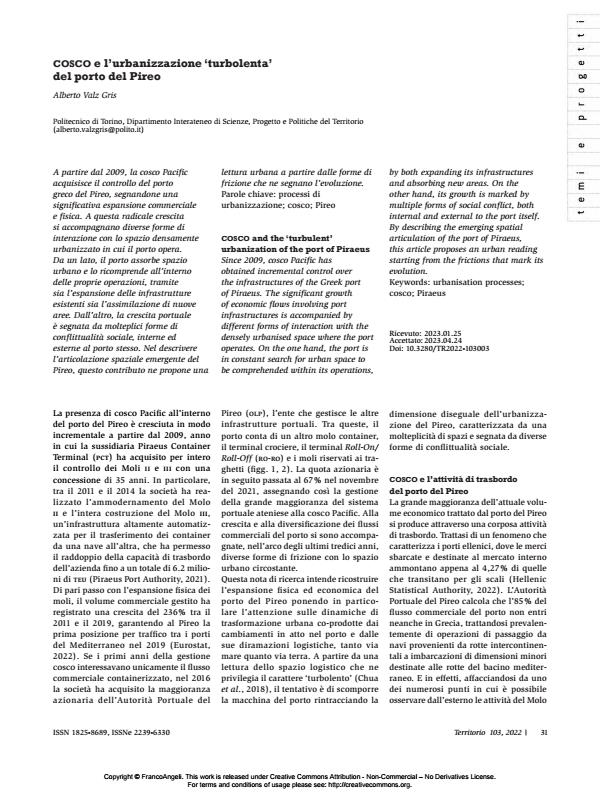Cosco and the ‘turbulent’
Journal title TERRITORIO
Author/s Alberto Valz Gris
Publishing Year 2023 Issue 2022/103
Language Italian Pages 6 P. 31-36 File size 400 KB
DOI 10.3280/TR2023-103003
DOI is like a bar code for intellectual property: to have more infomation
click here
Below, you can see the article first page
If you want to buy this article in PDF format, you can do it, following the instructions to buy download credits

FrancoAngeli is member of Publishers International Linking Association, Inc (PILA), a not-for-profit association which run the CrossRef service enabling links to and from online scholarly content.
Since 2009, cosco Pacific has obtained incremental control over the infrastructures of the Greek port of Piraeus. The significant growth of economic flows involving port infrastructures is accompanied by different forms of interaction with the densely urbanised space where the port operates. On the one hand, the port is in constant search for urban space to be comprehended within its operations, by both expanding its infrastructures and absorbing new areas. On the other hand, its growth is marked by multiple forms of social conflict, both internal and external to the port itself. By describing the emerging spatial articulation of the port of Piraeus, this article proposes an urban reading starting from the frictions that mark its evolution.
Keywords: urbanisation processes; cosco; Piraeus
- The (in)visible face of global infrastructures: An exploration of logistics and informality from the ground up Astrid Safina, in Environment and Planning D: Society and Space /2025 pp.834
DOI: 10.1177/02637758251319671
Alberto Valz Gris, Cosco e l’urbanizzazione "turbolenta" del porto del Pireo in "TERRITORIO" 103/2022, pp 31-36, DOI: 10.3280/TR2023-103003